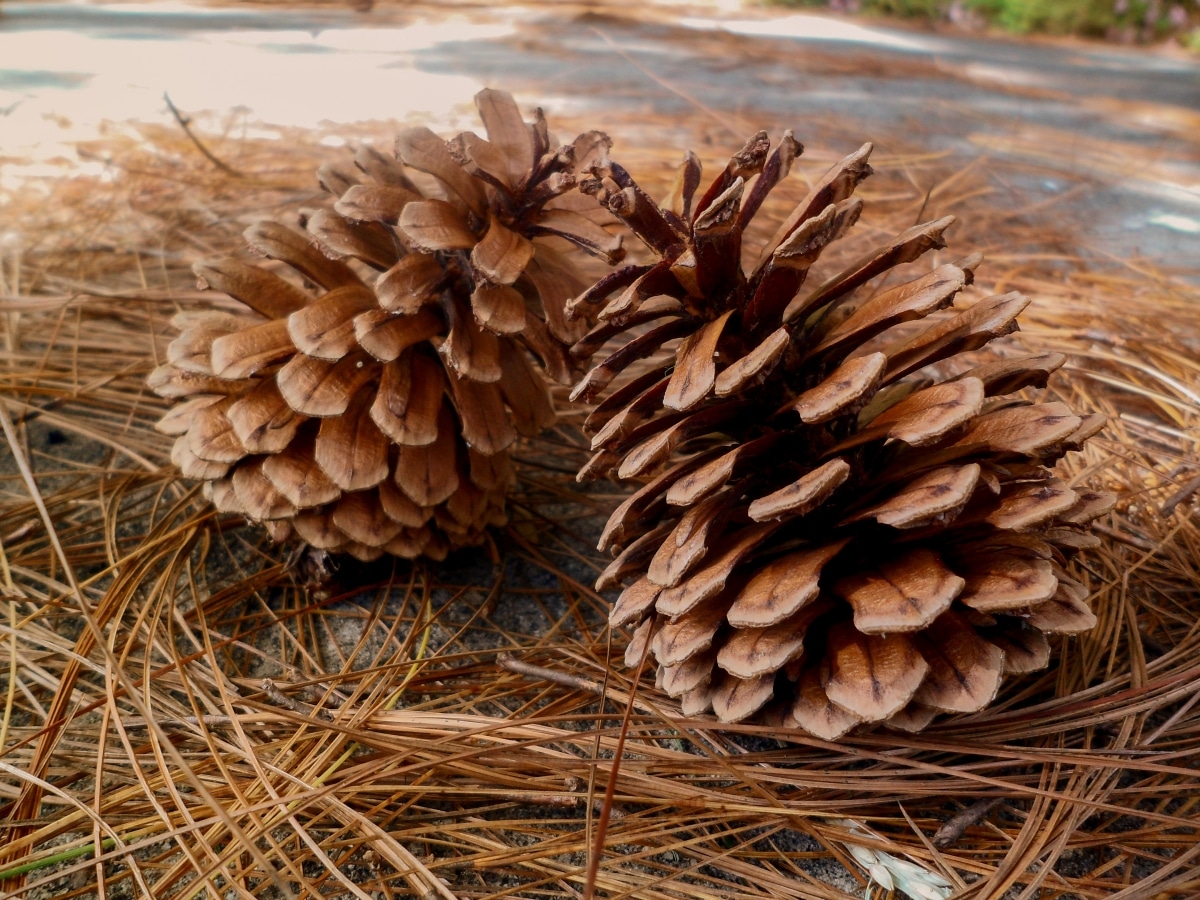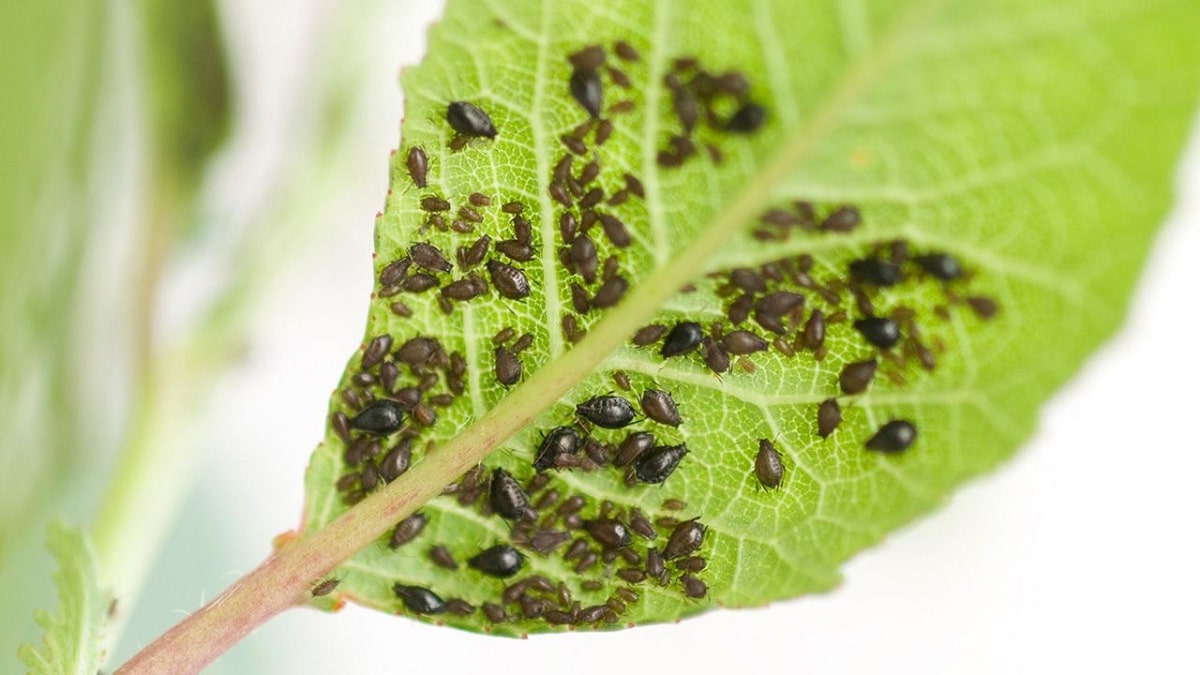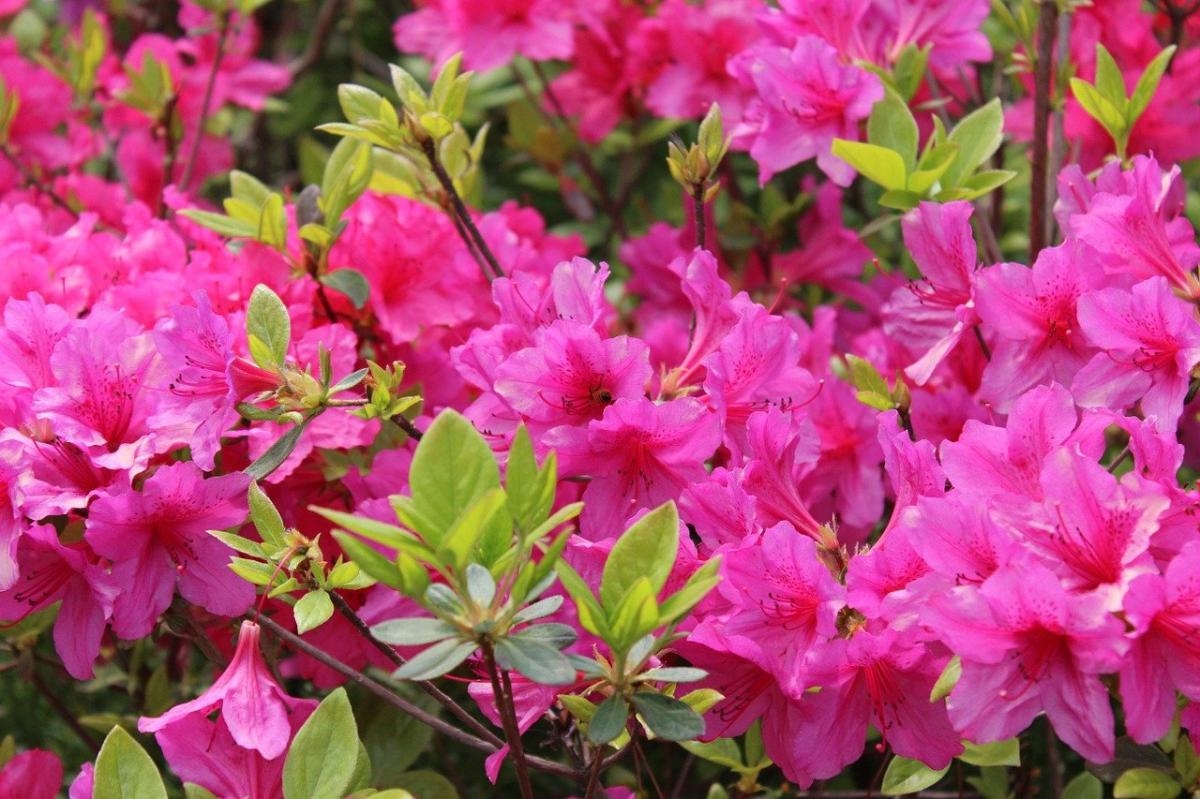
It is not usual to want to plant pine trees in the gardens because of the risk of having problems with their roots, but if they are placed at a distance of ten meters from the pipes we will obtain a few benefits from what is known as needles.
Needle is the leaf of these conifers, and if you have ever passed near one, you may have been able to see the ground covered by a large number of pine needles. If this is collected, can be used in a few different ways that we will now explain to you.
How to use the needles?

Pine needles have uses that you may not have known. It is often considered "garbage" because pines are trees that, despite being evergreen, tend to drop many leaves throughout the year, covering the ground with them, but we hope that they will no longer be seen as such, since they can help to have plants with a better state of health.
Thus, the uses that it is given are:
Lower the soil pH
Pine leaves have a low pH, around 3.2 and 3.8. This means that their pH is acidic, which is very interesting since when they drop, help reduce soil pH. If we grow acidic plants, like japanese maples, heather, and even fruit trees with a tendency to have chlorosis in clay soils, such as citrus (orange, lemon, etc.), throwing needles around them or mixing them with the soil will help the roots of these more delicate plants obtain the nutrients what do you need.
Improve soil water retention
The retention of water in the soil in which it is grown is very important: the soil has to be able to stay moist for a reasonable time so that the roots can absorb it. When this does not happen, for example, in sandy soils, the precious liquid is quickly lost. One way to correct it is by mixing it with needles, or using it as a quilt. In this way, we also prevent the earth from compacting, something that would prevent plants from developing normally.
As compost
It is the traditional use. Needle is rich in essential nutrients, which is why it is often used as compost for acid plants and / or for soils that want to lower the pH. For it, old pine needles are used, since the new ones not only take a long time to decompose (up to two years), but also being very acidic make the growth of microorganisms such as bacteria and / or fungi slow, so it takes longer to have the compost ready.
One way to speed up the composting process is by shredding the pine needles before putting them in the pile. Another option is simply leaving them on the ground, in a controlled area of the garden or orchard, so that they decompose and fertilize the plants.
Natural insecticide

You wouldn't say, would you? But yes, pine needles are a good insecticide. It is especially recommended to remove aphids, one of the pests that most affect many crops, but it also works against caterpillars and weevils. The mode of preparation is as follows:
- We will cut into very small pieces between 1 and 1,5kg of young pine leaves.
- Later, we will introduce them in a bucket with hot water, and we will cover it since it should be kept like that for 3-4 days.
- During that time, you have to stir the mixture from time to time.
- On the fifth day, we filter and dilute the mixture in pure water.
- Finally, we add two tablespoons of neutral liquid soap.
And ready! Now we only have to fill a sprayer / atomizer and spray the affected plants with it.
Against fungi
As we have discussed above, needles inhibit the growth of fungi and bacteria. This is very interesting, because we can use it to our advantage to protect plants against these microorganisms.
An infusion is made with pine needles and water, in a ratio of approximately 1: 2 and then the plant is sprayed every 10 to 14 days.
What plants need needles?

En general, the plants that need needles are these:
- Japanese maples
- Azaleas and rhododendrons
- Heather
- Camellias
- Daphne
- Gardenias
- Hydrangeas
- Magnolia trees
But this will depend on whether they are grown in acidic soils or substrates, in which case the needles would not be necessary, or if, on the contrary, they are planted in lands with a neutral or alkaline pH.
In addition, there are other plants that can also benefit from it. For example, trees and shrubs of the genus Citrus They tend to have chlorotic leaves (that is, yellowish with green veins) on clay soils, so it will be good for them to mix some composted needles with the soil.
Did you know the benefits of needles?


Excellent information
Thank you!
arfraga@intramed.net
All very useful.
I have a palm tree that was affected by something white foamy not sticky. I transplanted it, I washed it with water and white soap and I would like to know if the pine needles can help me.
Thank you
Hello Adriana.
I haven't tried it so I can't tell you if it will really work for you or not, but being natural and organic, it's worth trying.
A greeting.
Very good note
We are glad to know that you found it interesting.